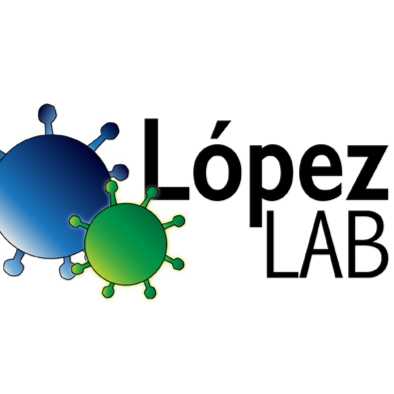Feb 01, 2025
Plasmids transfection using Mirus TransIT-LT1
- 1Washington University

Protocol Citation: Carolina Lopez 2025. Plasmids transfection using Mirus TransIT-LT1. protocols.io https://dx.doi.org/10.17504/protocols.io.5qpvo9o5dv4o/v1
License: This is an open access protocol distributed under the terms of the Creative Commons Attribution License, which permits unrestricted use, distribution, and reproduction in any medium, provided the original author and source are credited
Protocol status: Working
We use this protocol and it's working
Created: December 17, 2024
Last Modified: February 01, 2025
Protocol Integer ID: 115840
Abstract
Protocol for in culture cell transfection using the Mirus TransIT-LT1 transfection reagent
Materials
1. Cultured cells
2. Transfection reagent: TransIT-LT1 (Mirus, #MIR2304)
3. Cell culture medium (TCM): Filter through 0.2 µm filter
| A | B | C | D | |
| DMEM | 500 mL | Gibco, # 11965092 (#11965118-cs) | ||
| Gentamicin | 500 µL | 50µg/mL | Gibco, #15750060 (#15750078-pk) – 50 mg/mL | |
| Sodium Pyruvate | 5.0 mL | 1mM | Corning, #25-000-Cl – 100mM | |
| L-Glutamine | 5.5 mL | 2 mM | Sigma Aldrich, #G7513 – 200mM | |
| FBS | 50 mL | 10% |
4. Purified plasmid DNA
5. Opti-MEM (Thermo, #31985070)
6. Sterile tube for transfection complex preparation
7. Micropipets
8. Reporter assay as required
9. 0.05% Trypsin (Thermo, #25300054)
Seed cells to a 6-well plate
Seed cells to a 6-well plate
- Check cells to ensure they are in good condition, approximately 90% confluent
- Wash cells twice with PBS.
- Add 3 mL 0.05% trypsin-EDTA to the T75 flask, incubate at room temparture for 3-4 minutes.
- Add 7 mL TCM to the flask to stop trypsinization and collect cells.
- Mix 10 µL cells and 10 µL Trypan blue, then add 10 µL mixture to a cell counter slide and count the cells.
- Plate 400,000* cells in 2 mL of TCM media to each well
- Gently tap the plate to disperse the cells evenly.
- Incubate cell cultures overnight.
Notes:
- The choice of plate size depends on your experimental goals and the assay requirements. You can scale up or down based on your purpose.
- The cell number depends on the cell line type. For example, HEK293T cells require a higher number of cells to reach 70-90% confluency overnight compared to BSR-T7 cells.
*400,000 cells is the number we usually use for BSR-T7 cells.
Transfection
Transfection
Check the cells:
- Cells confluence should between 70-90%, and evenly distributed.
- Do not use cells older than 24 hours after seeding.
Prepare TransIT-LT1 Reagent:DNA complex:
- Warm TransIT-LT1 Reagent to room temperature and vortex gently before using.
- Place 250 µL of Opti-MEM in a sterile tube.
- Add 3 µg plasmid DNA.
- Pipet gently to mix completely.
- Add 9 µL TransIT-LT1 Reagent to the diluted DNA mixture. Avoid any contact of the TransIT-LT1 Reagent with the sides of the plastic tube.
- Pipet gently to mix completely.
- Incubate at room temperature for 15–30 minutes.
Notes:
- The plasmid DNA amount and DNA to transfection reagent is cell type dependent, start with 3 μl of transfection reagent per 1 μg of DNA. Vary the concentration of TransIT-LT1 Reagent from 2–6 μl per 1 μg DNA to find the optimal ratio.
- Below are examples we have done in the Lopez lab, all of which have been confirmed to work well.
| A | B | C | D | E | F | |
| Cell line | Plate size | Plasmids | TransIT-LT1 | Confirmed by | Efficiency | |
| BSR-T7 | 6-well plate | 3ug | 9uL | GFP expression | >50% (1dpt) | |
| HEK293T | 6-well plate | 1ug | 3uL | GFP expression | >90% (1dpt) | |
| HEK293T | 6-well plate | 2ug | 6uL | IFA | >80% (2dpt) | |
| BSR-T7 | 6-well plate | 1.3ug | 6uL | WB | Good (2dpt) |
Distribute the complexes to cells in complete growth medium
- Add the TransIT-LT1 Reagent:DNA complexes drop-wise to different areas of the wells.
- Gently rock the culture vessel back-and-forth and from side-to-side to evenly distribute the complexes.
- Incubate for 24–72 hours. It is not necessary to replace the complete growth medium with fresh medium.
- Harvest cells and assay as required.
Troubleshooting
Troubleshooting
Consider checking these factors if you encounter a negative result or low efficiency:
- Confirm the plasmid sequence.
- Run a gel to check the quality of your plasmids.
- Ensure you are using the correct cell type. For example, if your plasmid has a T7 promoter, you need a cell line expressing T7 polymerase, such as BSR-T7.
- Remember that transfection efficiency depends on several factors, including cell type, cell condition, plasmid type, the protein expressed by your plasmid, the transfection reagent, incubation time, and the transfection procedure.
- Co-transfection of two or more plasmids requires consideration of the plasmid ratio, such as in minigenome systems or reverse genetic systems.
- It’s always helpful to include a positive control.
Protocol references
